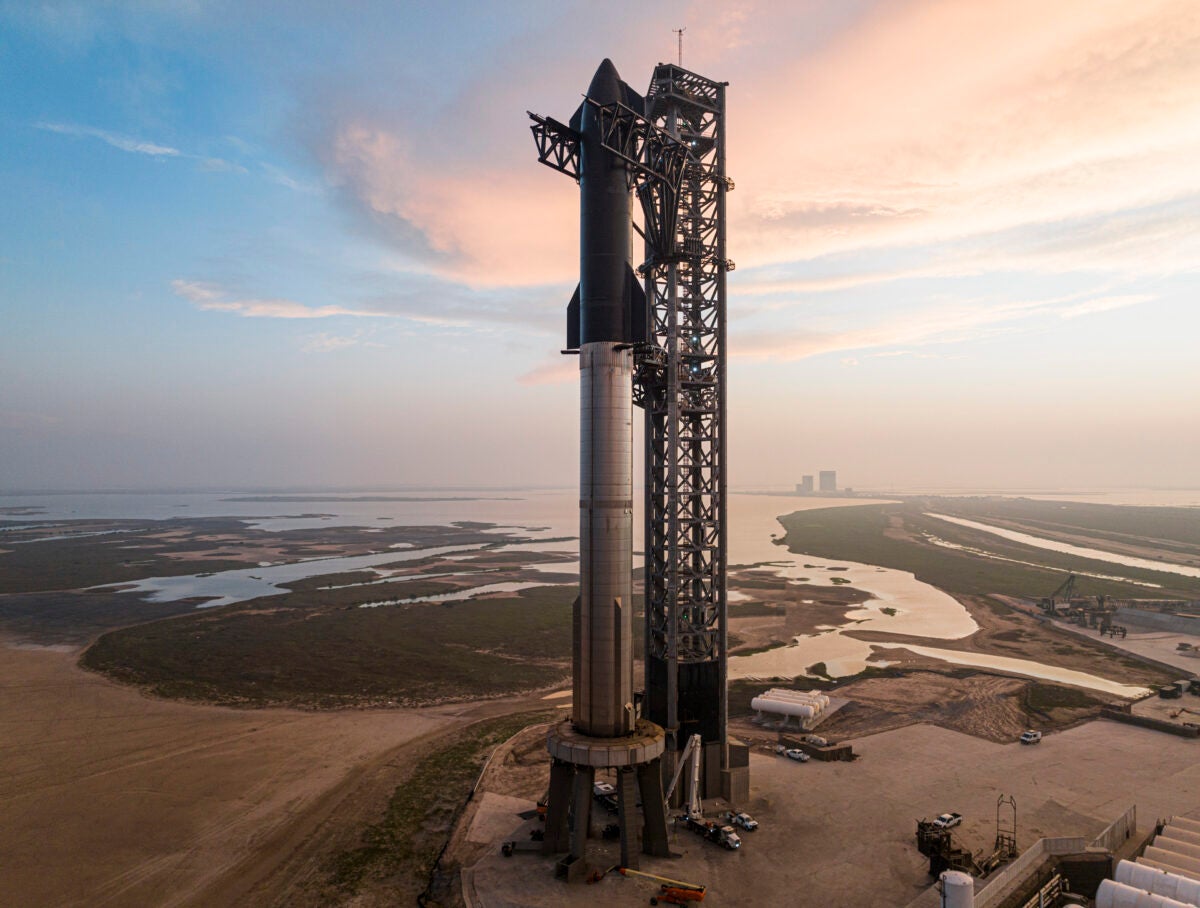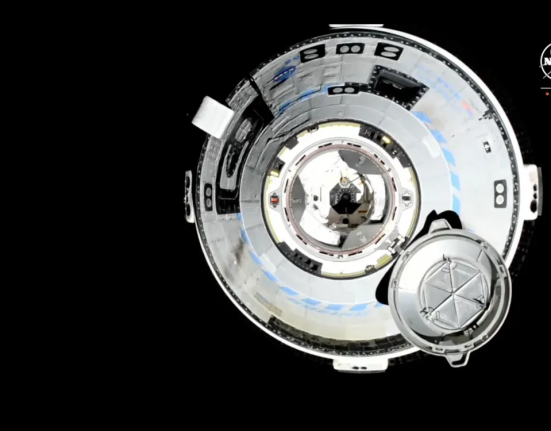
The Starship upper stage and Super Heavy rocket sit on the launch pad in April 2023 ahead of the first integrated flight test of SpaceX's Starship system. Credit: SpaceX
Rockets get all the glory and glamour. It's a fact. They're tall, shiny objects. They blast off from Earth in columns of flame and make a thunderous noise as they transport people and machines to the farthest reaches of outer space. No wonder we love them.
However, launch pads are often overlooked even by space travel enthusiasts. Without a well-designed and properly built launch pad, rockets would never get off the ground.
When Elon Musk’s SpaceX group decided to build and fly its massive Starship rocket from Boca Chica, Texas, one of the first things they had to consider was how to design and build a launch pad that could support the largest rocket humans have ever built in a region with a high water table that makes digging more than a few feet below the surface impossible.
The SpaceX team had to modify and reinforce the ground beneath the launch pad with more than 300,000 cubic meters of dirt to support the weight of the pad and rocket. With that done, the company began construction of the steel-reinforced concrete Orbital Launch Mount (OLM), a raised ring-shaped platform that supports the entire rocket assembly, with room underneath for Starship’s 33 Raptor engines to release their flames upon ignition and during launch. The OLM also includes massive braces that hold the rocket on the ground until all of its engines ignite and produce enough thrust to send it into space.
Next to the OLM is the Starship tower, sometimes referred to as the Orbital Launch and Integration Tower (OLIT). The launch tower has several functions, including serving as a giant crane to help lift Starship and stack it atop the Super Heavy Booster with two massive, movable robotic “arms.” By comparison, NASA built the giant Saturn V moon rocket in the Vehicle Assembly Building (VAB) and then moved it to the launch pad atop a massive mobile transport, known as a “crawler.” SpaceX assembles the stack on the launch pad itself.
The SpaceX team hopes that in the future the tower’s arms, known as “chopsticks,” will be able to catch the Super Heavy Booster as it returns to the launch pad after each flight. The SpaceX group has not yet achieved this, but remains optimistic that it will in the future. Musk himself has referred to the entire launch complex as “Mechazilla,” given its size, technical complexity, and robustness.
One critical aspect is that when SpaceX built the launch pad, engineers did not include a flame ditch, also known as a flame diverter. Flame ditches have long been used in spaceflight to divert high-temperature exhaust gases away from the launch pad and tower to reduce the risk of damage to the rocket or launch facilities. Ever the innovator, in October 2020, Musk tweeted, “I aspire to have no flame diverter at Boca Chica, but this may prove to be a mistake.” One argument for not building a flame ditch at Boca Chica is that any place SpaceX would land on the Moon or even Mars would not have one either, so if SpaceX could build a rocket/launch pad that didn’t have or need one, they could launch from those future destinations as well.
However, this plan backfired. During Starship’s first integrated launch in April 2023, one drawback of not incorporating a flame trench became very apparent. Although the launch was partially successful, Starship’s engines caused severe damage to the OLM, dislodging much of its concrete and launching debris into the air and surrounding area, possibly causing, or at least contributing to, the failure of several of the first-stage Raptor engines. Huge chunks of concrete were clearly seen flying in video of the launch, and debris was scattered across a wide area around the launch site. Additionally, after launch, the SpaceX team discovered that engine exhaust had dug a deep crater beneath the OLM. The group quickly realized that the OLM would need to be redesigned and rebuilt.
The SpaceX team proposed, and subsequently implemented, a water-cooled, multi-layered steel plate that sits at the base of the OLM. The plate, which is perforated throughout, is flooded with a massive amount of water during the firing of the engines that launch Starship from the pad, absorbing heat, sound, shock waves, and the monstrous force of liftoff. To date, this device has worked in practice several times and is being further strengthened given the number of Starship launches planned. SpaceX has also made other modifications to the Starship launch pad at Boca Chica based on lessons learned from early Starship flights, notably adding more protection to sensitive equipment.
SpaceX also wants to launch Starships from a second complex at Boca Chica and is seeking to launch Starship from Cape Canaveral Space Force Station in Florida by 2026. Any new facility seems likely to incorporate technology based on lessons learned from the original Starship launch complex at Boca Chica.
A launch pad is analogous to the foundation of a house. Without a good foundation, the house will wobble. Without a good launch pad, the rocket will go nowhere. Musk and SpaceX appear to be working hard to build the best launch pad they can to help get Starship into orbit and beyond, and to be able to receive the returning first stage as well. Given their ambitions, they're going to need it.













Leave feedback about this